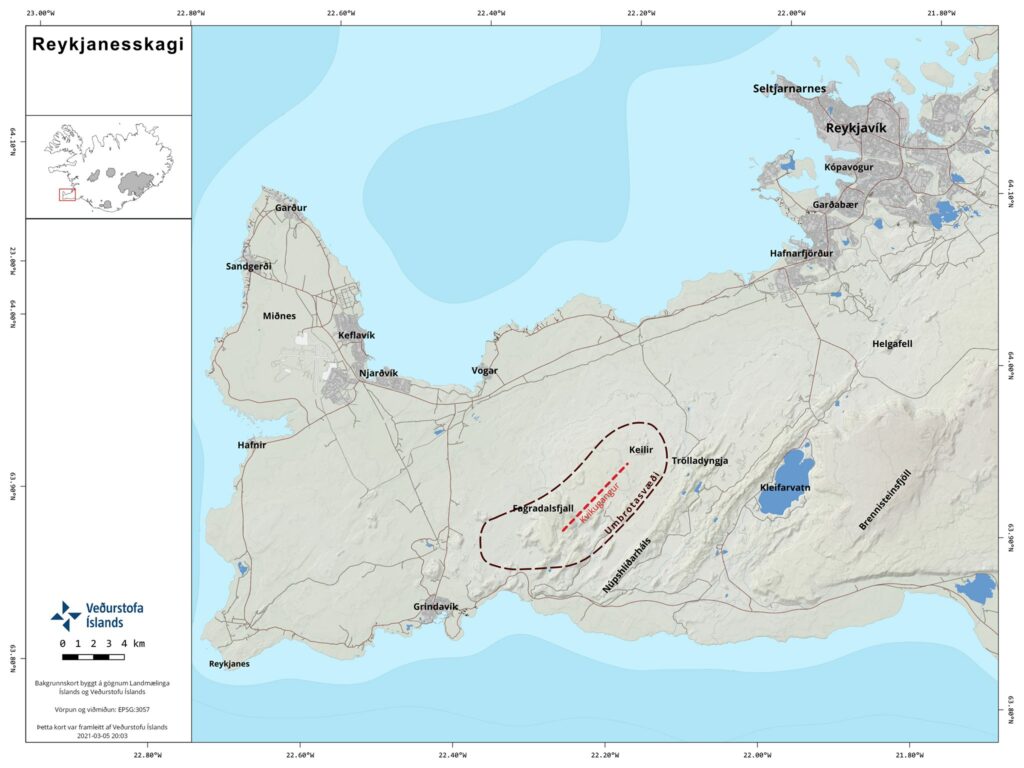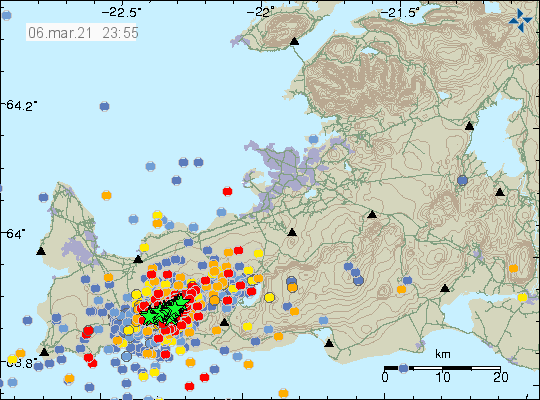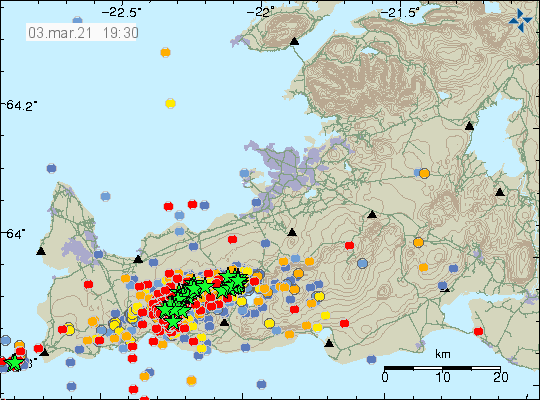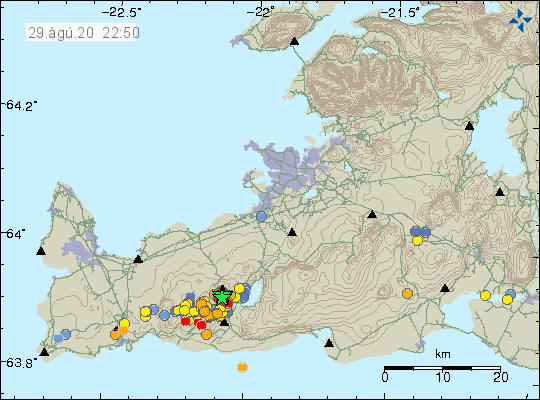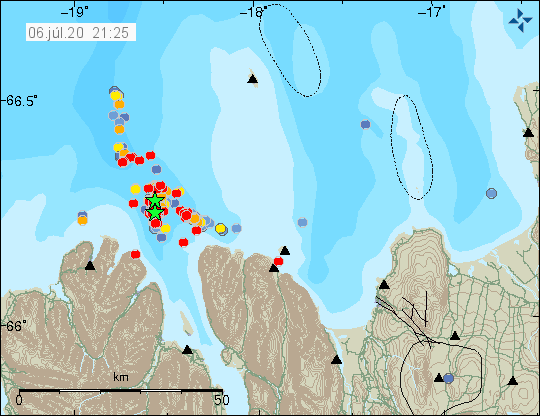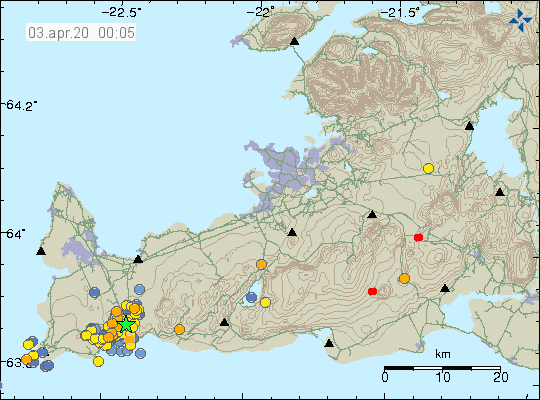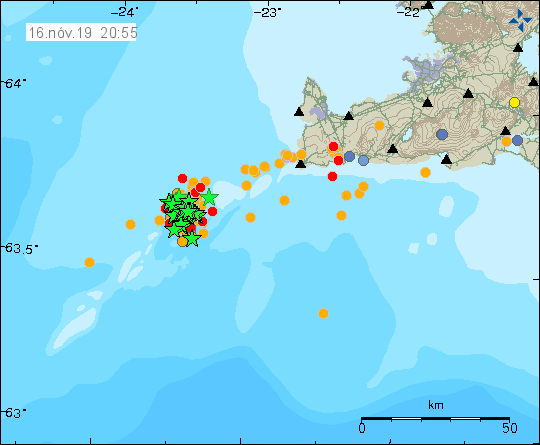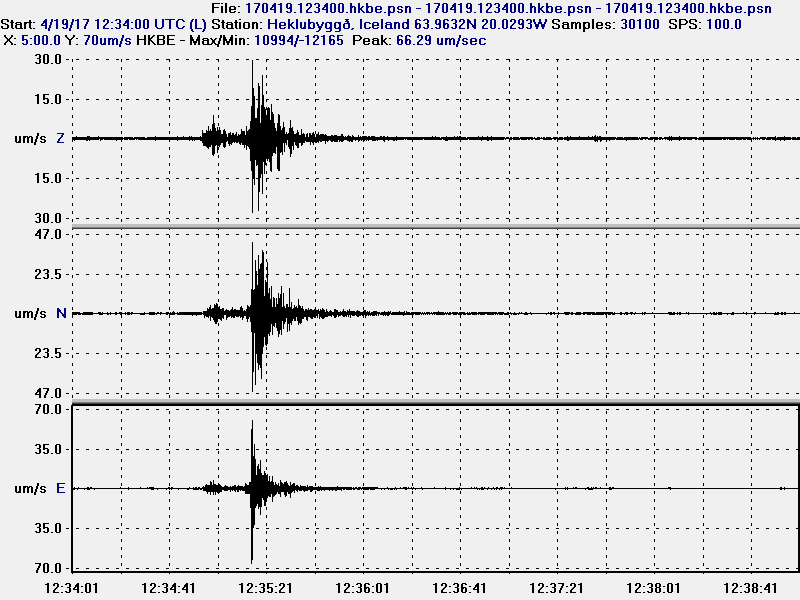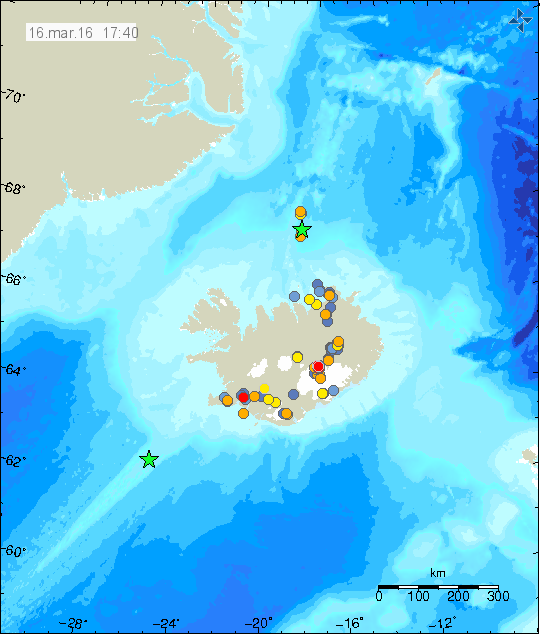At 04:30 this morning (19-March-2021) an earthquake swarm started just off the coast of Reykjanestá. This activity looks tectonic in nature for now but it is highly focused in one location. This earthquake activity did start on 24-February-2021 when the Mw5,7 earthquake happened. This activity was only going on for short period of time on 24-February-2021 before it stopped until now.
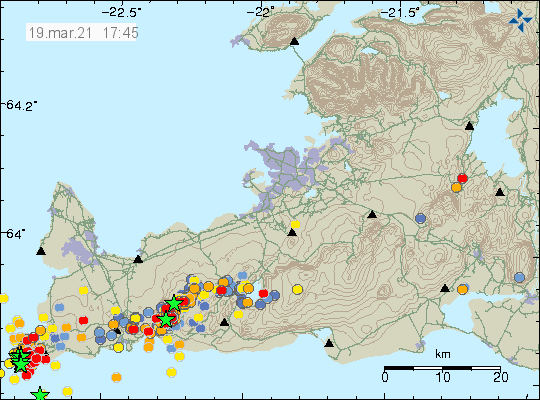
Largest earthquakes in this swarm had a magnitude of Mw3,7 but in total of 10 earthquakes with magnitude above 3 took place in this earthquake swarm. Around 100 earthquakes where recorded at the writing of this article but after 06:00 this earthquake swarm slowed down from its peak activity around 05:50. This earthquake swarm might increase again without warning.


